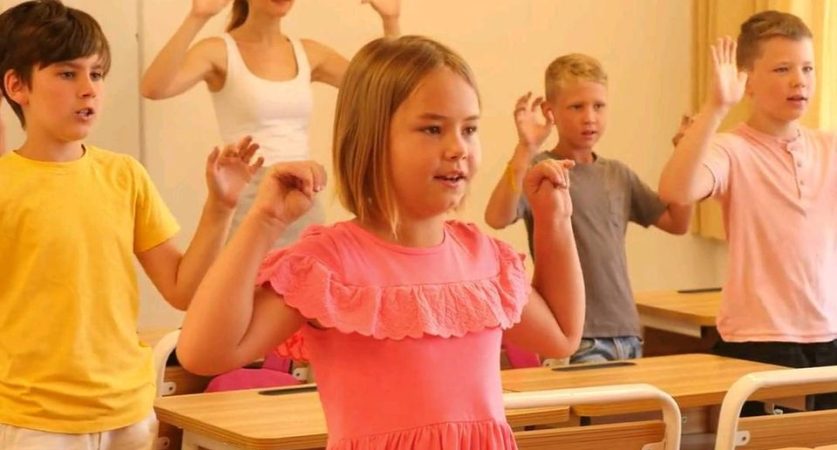Teaching music is a dynamic and enriching experience that goes beyond mere instruction. It involves inspiring creativity, fostering a love for music, and nurturing the talents of students. Crafting effective music lesson plans and utilizing the right music teaching tools are essential for achieving these goals. This article explores how educators can design engaging music lesson plans and leverage innovative teaching tools to create a stimulating learning environment.
Understanding the Importance of Music Lesson Plans
Music lesson plans serve as a roadmap for teachers, guiding them through each class and ensuring that learning objectives are met. An effective lesson plan outlines the goals, materials, activities, and assessment methods for a lesson, providing a structured approach to teaching. Here’s how you can create a comprehensive music lesson plan:
- Define Clear Objectives: Start by identifying the learning goals for the lesson. What do you want your students to achieve by the end of the class? Objectives should be specific, measurable, and attainable. For example, an objective might be for students to learn how to read musical notation or to understand the basics of rhythm.
- Plan Engaging Activities: Music lessons should be interactive and enjoyable. Incorporate a variety of activities such as singing, playing instruments, listening to music, and movement exercises. Activities should be designed to reinforce the lesson objectives and cater to different learning styles.
- Include Assessment Methods: Assessments help you gauge students’ understanding and progress. Include both formative assessments, such as quizzes and observations, and summative assessments, like performances or projects. This will provide a comprehensive picture of each student’s development.
- Prepare Materials and Resources: Ensure you have all the necessary materials ready before the lesson. This includes musical instruments, sheet music, audio equipment, and any other teaching aids. Having everything prepared in advance allows the lesson to flow smoothly.
Utilizing Innovative Music Teaching Tools
In today’s digital age, there is a wealth of music teaching tools available that can enhance the learning experience. These tools can make lessons more engaging and help students develop their musical skills more effectively. Here are some essential music teaching tools to consider:
- Digital Audio Workstations (DAWs): DAWs like GarageBand, Logic Pro, and Ableton Live allow students to compose, record, and edit music digitally. These tools are invaluable for teaching composition and music production. Students can experiment with different sounds and create their own music, fostering creativity and technical skills.
- Music Education Apps: There are numerous apps designed to teach music theory, ear training, and instrument skills. Apps like Yousician, Simply Piano, and Tenuto provide interactive lessons and exercises that make learning fun and engaging. These apps can be used in the classroom or assigned as homework to reinforce learning.
- Interactive Whiteboards: Interactive whiteboards enable teachers to display music notation, videos, and other multimedia resources. They can be used to illustrate concepts, demonstrate techniques, and engage students in interactive activities. This technology makes lessons more dynamic and visually appealing.
- Online Learning Platforms: Platforms like Google Classroom, Moodle, and Blackboard can be used to organize lesson materials, assignments, and assessments. These platforms facilitate communication between teachers and students and provide a central location for resources. They are especially useful for remote or hybrid learning environments.
- Virtual Instruments: Virtual instruments, such as software synthesizers and drum machines, provide students with access to a wide range of sounds and instruments. These tools are perfect for schools with limited resources, as they allow students to explore different instruments without the need for physical equipment.
- Sheet Music Software: Programs like Finale, Sibelius, and MuseScore enable teachers and students to create and edit sheet music digitally. These tools are excellent for teaching music notation and composition. Students can write their own music and see it come to life through playback features.
Practical Application: Designing a Music Lesson Plan
To illustrate how to integrate these elements into a music lesson plan, let’s consider a sample lesson on rhythm and percussion for elementary students.
- Objective: By the end of the lesson, students will be able to identify and perform basic rhythmic patterns using percussion instruments.
- Materials: Percussion instruments (drums, tambourines, maracas), interactive whiteboard, rhythm flashcards, DAW (GarageBand), and music notation software (MuseScore).
- Activities:
- Introduction (10 minutes): Begin with a discussion on rhythm and its importance in music. Use the interactive whiteboard to display different rhythmic patterns.
- Group Activity (15 minutes): Divide students into small groups and give each group a percussion instrument. Have them practice basic rhythms using the flashcards as a guide.
- Digital Composition (20 minutes): Introduce students to GarageBand. Show them how to create a simple rhythmic track using virtual drums. Allow them to experiment and create their own rhythms.
- Performance and Feedback (15 minutes): Have each group perform their rhythmic patterns for the class. Provide constructive feedback and encourage peer evaluation.
- Assessment:
- Formative: Observe students during group activities and provide immediate feedback.
- Summative: Assess students’ digital compositions and group performances based on accuracy and creativity.
Conclusion
Crafting effective music lesson plans and utilizing innovative music teaching tools are crucial for creating an engaging and successful learning environment. By defining clear objectives, planning interactive activities, and incorporating digital tools, educators can inspire their students and foster a deep appreciation for music. Whether teaching in-person or online, these strategies will help you deliver impactful and enjoyable music lessons.


























